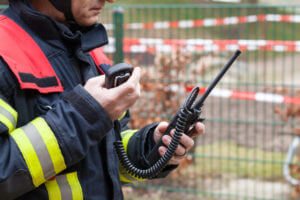 Some of the most important goals of a public safety organization is to keep the community safe, prevent harm wherever possible and respond quickly to emergencies. But achieving these goals in a rapidly-changing environment can be complicated. With the advancements in high-speed data communications, such as streaming video and high-definition surveillance, reliable and secure public safety telecom accessibility has become a critical component to protecting public safety.
Some of the most important goals of a public safety organization is to keep the community safe, prevent harm wherever possible and respond quickly to emergencies. But achieving these goals in a rapidly-changing environment can be complicated. With the advancements in high-speed data communications, such as streaming video and high-definition surveillance, reliable and secure public safety telecom accessibility has become a critical component to protecting public safety.
To meet the needs of many in an effective, timely manner, public safety entities are faced with big responsibilities and depend on reliable communications every single day. According to the FCC’s Public Safety and Homeland Security Bureau Reminds Communications Service Providers of Importance of Implementing Network Reliability Best Practices, here are seven best practices to keep in mind.
7 Best Practices for Public Safety Telecom
1. Awareness Training
“Network Operators, Service Providers and Equipment Suppliers should provide awareness training that stresses the services impact of network failure, the risks of various levels of threatening conditions and the roles components play in the overall architecture. Training should be provided for personnel involved in the direct operation, maintenance, provisioning, security and support of network elements.”
2. Required Experience and Training
“Network Operators, Service Providers, and Equipment Suppliers should establish a minimum set of work experience and training courses which must be completed before personnel may be assigned to perform maintenance activities on production network elements, especially when new technology is introduced in the network.”
3. Access Privileges
“Service Providers, Network Operators, and Equipment Suppliers should have policies on changes to and removal of access privileges upon staff member status changes.”
4. Network Change Verification
“Network Operators should establish policies and processes for adding and configuring network elements that include approval for additions and changes to configuration tables (e.g., screening tables, call tables, trusted hosts, and calling card tables. Verification rules should minimize the possibility of receiving inappropriate messages.”
5. Network Reconfiguration 911 Assessment
“Service Providers and Network Operators when re-configuring their network (e.g., changes to Virtual Private Cloud (VPC), Mobile Position Center (MPC), Gateway Mobile Location Center (GMLC), or Emergency Services Gateway (ESGW)) should assess the impact on the routing of 911 calls.”
6. Diversity Audits
“Network Operators and Public Safety should periodically audit the physical and logical diversity called for by network design of their network segment(s) and take appropriate measures as needed.”
7. Network Monitoring
“Network Operators, Service Providers, and Public Safety should monitor their network to enable quick response to network issues.” The Bureau encourages service providers to review and consider voluntarily implementing these network reliability best practices as appropriate.
Taking the above steps could help to prevent future outages, mitigate the impact of outages that do occur and ultimately help to keep the community safe.
Design Considerations for Seamless Public Safety Telecom Support
Deployment of public safety telecom solutions for reliable communication coverage is of high importance. As with most government and public safety entities, communication solutions require customized security, reliable engineering, fast installation and quality maintenance.
Whether located in coastal environments like California, facing the challenges a metropolis like New York City, busy residential neighborhoods, or rural farmland locations, KMB has the experience to handle any sized challenge. Our responsive telecommunication and engineering solutions provide proven results for all your public safety communication needs.
#ResponsiveEngineeringProvenResults
Read more on our blog: